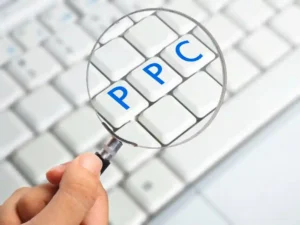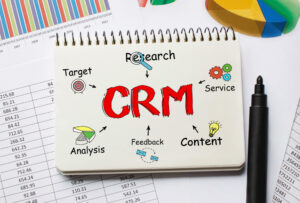When I was younger and I listened to Hannah Montana sing “The Best of Both Worlds,” I didn’t fully understand what she meant.
Now, as a marketer, I get it.
Having the best of both worlds is the feeling you have when your company’s marketing automation software and CRM work in tandem.
But it’s not just about how much easier it makes your job. When the two software work together, your company will convert more MQLs to SQLs and make more sales.
In fact, marketing automation software can increase sales productivity by 14.5%.
That’s why marketing and sales teams need to integrate their software and work together.
Below, we’ll review what marketing automation and CRM software do and why they need to be integrated.
Free Hubspot Portal Review? Get expert insights and recommendations for how to best leverage HubSpot.
CRM and Marketing Automation
Before we dive into why marketing automation and CRM need each other, let’s discuss what each software does.
To start, marketing automation software helps marketers automate some of their processes such as sending email campaigns or posting social media posts.
Marketing teams use automation software to produce and promote content.
Additionally, this software includes reports and analytics for when leads visit your website, open an email, fill out a form, or read a blog.
Ultimately, the goal is to streamline the process of taking a lead, nurturing them, and moving them to a sales-qualified lead. Essentially, it’s all about lead generation and personalization.
If your team needs more marketing qualified leads, a way to distribute content, or has a large email list, it’s time to invest in marketing automation software.
Some of the best marketing automation software include HubSpot, MailChimp, and Marketo.
On the other hand, CRM is software that helps sales teams manage their pipeline and lead qualification processes.
A CRM will track customer data, including dates and notes of phone conversations, past purchase records, and emails.
Essentially, with this software, your salesperson can see the full picture of who a prospect is and their history with your company.
Ultimately, a CRM helps sales reps take prospects from sales qualified leads to customers.
If your salespeople lose track of prospects, forget to follow up, or you’ve outgrown your lead tracking system, it’s time to look into CRM.
A few of the best CRM platforms are HubSpot, Zoho, and Salesforce.
HubSpot is one of the best choices because the HubSpot Marketing Hub includes the foundational CRM functionalities, so you have both software in one.
However, for the optimal experience, you should use both the HubSpot Marketing Hub and advanced Sales Hub so you have more sophisticated features in marketing automation and CRM.
Now that we’ve discussed what each software does and how it can help your team, you might be wondering, “Why do these need to work together?”
Well, when marketing automation and CRM software work together, they provide a seamless journey for your customers as they go from visitor to MQL to SQL to customer.
Additionally, integrating the two software will give your sales reps the full picture of a prospect’s interaction with your company. Your sales rep will know the marketing history of their prospects.
Plus, when marketing automation and CRM are integrated or in one software, your marketing and sales team can provide consistent messaging.
Let’s go through a tangible example of how the two software can work together.
To start, let’s say a marketer attracts a lead through a blog post, much like this one.
Perhaps that lead decides to download a lead magnet and fill out a form. Once that happens, the marketing team starts nurturing the lead through an email marketing campaign.
After taking enough action, that lead becomes a marketing qualified lead. After a while, let’s say they request a demo and are officially a sales-qualified lead.
Once this happens, the sales rep who’s responsible for the demo goes to the marketing automation and CRM software to gather information on their interactions with the company.
They find out what offers the prospect has downloaded, what blogs they’ve read, who they are, and what company they work for.
This information informs the rep’s strategy for the demo call, so they’re prepared to answer the right questions and personalize the sales call.
If the marketing automation and CRM weren’t connected, your sales rep wouldn’t be able to find that information easily. Perhaps they even ask the prospect during the demo call, which irritates the prospect because they’ve already given your company that information and they’re repeating themselves.
That’s why the two need each other.
While you might have a system or process in place for lead tracking, it’s probably a manual process that comes with human error and prospects slipping through the cracks. You can’t scale a system like that.
Your marketing automation and CRM should be connected so your sales team has the right tools to close a deal.
Additionally, by integrating marketing automation and CRM software, your marketing and sales teams can work together.
For example, your marketing team might leave notes for your sales reps in a contact record about a previous interaction.
Or maybe your sales reps help your marketing team determine which content leads find the most helpful.
Integrating these systems should help you understand the gaps and friction points in your marketing and sales process. It can help you discover why leads aren’t moving from MQL to SQL or why prospects aren’t closing.
Ultimately, by integrating your CRM and marketing automation software, your team can:
- Generate more qualified leads
- Offer better visibility to marketing and sales teams
- Shorten the sales process
- Provide consistent messaging
- Unify your data management
- Improve the customer relationship
- Enhance pipeline management
- Develop cross-department relationships
Overall, integrating your CRM and marketing automation will make your marketing team, sales team, and customers happier, by streamlining the marketing and sales process.






